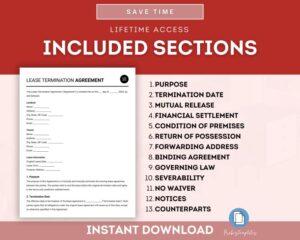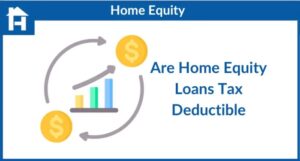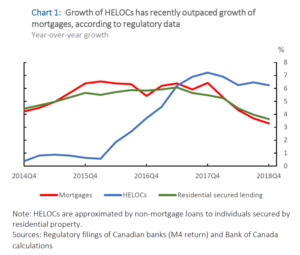Leasing options, oh what a delightful buffet of possibilities! Imagine a world where you can enjoy the finest things without committing to a lifelong relationship with your wallet. From cars that zoom to equipment that whirs, leasing opens the door to living large without the long-term baggage. Buckle up as we navigate the twists and turns of leasing, uncovering the pros, cons, and everything in between!
In this adventure, we’ll explore various leasing types, weigh the benefits against buying, and unravel the leasing process like a thrilling mystery novel. Along the way, you’ll discover how leasing can impact your finances, from credit scores to strategic debt management, all while fitting seamlessly into your personal finance plan. Let’s dive in!
Understanding Leasing Options
Leasing options can be a great way to get access to vehicles, equipment, or property without committing to a full purchase. It’s like borrowing your neighbor’s lawn mower but with a bit more paperwork and a few less awkward conversations. In this segment, we’ll explore the different types of leasing options, weigh the pros and cons of leasing versus buying, and walk through the leasing process, including the necessary documentation and approvals.
Types of Leasing Options
Leasing comes in several flavors, each with unique characteristics that cater to different needs. Here are the main types:
- Operating Lease: This is typically a short-term lease where the lessee pays for the use of an asset without owning it. Perfect for businesses that need flexibility and access to the latest equipment without the long-term commitment. Think of it as renting an apartment with the option to move every year.
- Capital Lease: This type is more akin to a financed purchase. The lessee bears the risks and rewards of ownership, often leading to ownership at the end of the lease term. It’s like a long-term relationship where you eventually get to marry the car.
- Finance Lease: Similar to a capital lease but typically non-cancellable. This option is ideal for businesses looking to acquire assets while spreading the cost over time. It’s like buying a couch on installment—you get the couch now but pay for it over several months.
Advantages and Disadvantages of Leasing Versus Buying
Deciding between leasing and buying can feel like choosing between pizza and tacos—both are great, but they serve different cravings. Here’s a breakdown of the advantages and disadvantages associated with leasing and buying.
- Advantages of Leasing:
- Lower upfront costs, making it easier on the wallet—like getting a discount on your pizza toppings.
- Access to the latest models or technology without the long-term commitment. You can swap out each year for something shinier!
- Maintenance is often covered—fewer trips to the repair shop, just like less time spent worrying about taco toppings!
- Disadvantages of Leasing:
- No ownership at the end of the lease term—like eating tacos but never getting to keep the deliciousness.
- Potential for mileage limits on vehicles, leading to extra charges if you go over—think of it like ordering a taco buffet but being told you can only eat three.
- Long-term costs can be higher if you lease repeatedly instead of buying. It’s like owning a pizza shop; if you keep renting ovens, it adds up!
Overview of the Leasing Process
Leasing isn’t just a casual handshake; it involves a bit of paperwork and approval processes. Here’s a sneak peek at what you can expect when embarking on a leasing journey.The leasing process typically starts with researching your options and gathering the necessary documentation. Here’s a quick checklist:
- Proof of Income: Lenders want to know you can pay your lease, so be ready to show off your salary—think of it as your financial selfie!
- Credit History: A good credit score can help secure better terms, so it’s time to charm the credit bureaus.
- Identification: Government-issued ID or driver’s license is essential for verification—because no one wants to lease a car to a ghost.
Once you’ve gathered your documents, it’s time to fill out the lease application. After submission, the leasing company will review your application, and if everything checks out, you’ll receive approval. Then comes the signing of the lease agreement—think of it like signing a contract to be the official taco taste tester for a day!
“Leasing can be a smart choice for those who love flexibility and access without the commitment of ownership.”
Financial Aspects of Leasing
Leasing might sound like a fancy term reserved for corporate boardrooms and the occasional hipster café, but its financial implications are anything but trivial. When you lease instead of buying, you’re not just signing a piece of paper; you’re making a significant impact on your credit score and overall financial health. Let’s dive into the nuts and bolts of leasing, where the dollars dance and cents make sense!
Impact on Credit Scores and Financial Health
Leasing can be a double-edged sword when it comes to your credit score. On one hand, consistent lease payments can bolster your creditworthiness by demonstrating your reliability to lenders. On the other hand, missing payments could send your score plummeting faster than a lead balloon. Here’s how it works:
“Leasing can enhance your credit profile if managed properly, but neglecting payments can lead to serious repercussions.”
In essence, leasing offers a way to build credit if you keep your payment schedule as tidy as your sock drawer! Furthermore, it can also affect your debt-to-income ratio, which lenders scrutinize like hawks. A lower ratio can make you more attractive to future creditors, while a higher ratio could have them running for the hills.
Comparative Costs of Leasing vs. Financing
Understanding the cost difference between leasing and financing various asset types is crucial for making informed financial decisions. Below is a comparison table that sheds light on the stark realities of your wallet’s fate, depending on whether you lease or finance.
| Asset Type | Leasing Cost (Monthly) | Financing Cost (Monthly) |
|---|---|---|
| Vehicle | $300 | $450 |
| Office Equipment | $150 | $200 |
| Commercial Space | $2,000 | $2,500 |
| IT Systems | $120 | $180 |
This table illustrates that leasing can often provide lower monthly costs than financing, a breath of fresh air for your cash flow.
Leasing as a Debt Management Strategy
Leasing should not merely be viewed as a means to an end; it can be a strategic component of debt management and relief. By opting to lease, individuals and businesses can avoid the heavy burden of large upfront costs while simultaneously preserving cash flow for other essential expenses. This practice allows for better budgeting and can ease the pain of monthly financial obligations.
Consider the scenario of a start-up that chooses to lease equipment instead of purchasing it outright. This decision can free up capital, allowing the fledgling business to invest in marketing and expansion, rather than being shackled to a hefty loan.
“Leasing can act as a financial cushion, softening the impact of sudden expenses and enabling strategic growth.”
In addition, leasing can simplify accounting and tax scenarios, as lease payments are generally considered operating expenses. This can create a more favorable tax situation compared to ownership, where depreciation and interest on loans come into play.
Leasing in the Context of Personal Finance

Leasing often gets a bad rap in conversations about personal finance, as if it’s just a way for companies to make their coffers gleam. However, when utilized wisely, leasing options can be a grand slam for your financial strategy, especially when it comes to estate planning and navigating the intricate dance of home equity loans. Let’s dive into the frothy waters of personal finance where leasing and estate planning waltz hand in hand.
Integration of Leasing Options into Estate Planning with Trusts
Leasing can play a pivotal role in estate planning, particularly when trusts are involved. The integration of leasing options into estate planning allows individuals to secure their assets while ensuring a smooth transition for beneficiaries. Trusts can hold leases as assets, providing a structured way to manage properties and investments during one’s lifetime and after passing. This can minimize estate taxes and avoid probate, making the process as smooth as butter on warm toast.
For instance, a common scenario involves a property lease held by a trust. If the trust owns the lease, it can generate income that benefits the beneficiaries without transferring ownership of the property itself. This means the family can enjoy financial benefits while avoiding the oft-dreaded tax man.
“Trusts can turn your leasing options into golden opportunities for your heirs—not just for your neighbor’s cat!”
Relationship Between Leasing Options and Home Equity Loans
Leasing options can have a curious relationship with home equity loans. While they may seem like two ships passing in the night, they can actually complement each other in certain situations. Home equity loans allow homeowners to borrow against the equity built up in their property, providing funds for various expenses, including leasing new vehicles or office equipment. Leasing can be especially beneficial for those who may not want to tap into their home equity for a down payment on a new property.
By leasing instead of purchasing, consumers can keep their home equity intact, preserving it for emergencies or future investments while still enjoying the use of the latest assets. Consider a homeowner who has built substantial equity and leases a car instead of buying it outright. This not only preserves cash flow but also allows the homeowner to keep their home equity as a safety net.
“Leasing a car while your home equity puts on its best face is like having your cake and eating it too!”
Guide for Evaluating Leasing Options Based on Personal Financial Situations
When considering leasing options, it’s essential to evaluate your personal financial situation thoroughly. Understanding your financial landscape can help optimize leasing decisions, ultimately leading to a more secure financial future. Here’s a handy guide to evaluating those options:
1. Assess Your Financial Goals
Determine what you aim to achieve with leasing. Are you looking for lower monthly payments, reduced maintenance costs, or access to new technology?
2. Review Your Credit Score
Leasing terms can be heavily influenced by your credit score. A higher score often leads to better lease offers. Obtain your credit report and review it thoroughly.
3. Compare Lease Terms
Not all leases are created equal. Compare terms, monthly payments, and mileage limits to find one that best suits your lifestyle.
4. Understand Total Costs
Look beyond initial monthly payments. Consider other costs like down payments, fees, insurance, and potential penalties for exceeding mileage limits.
5. Consult a Credit Counselor
If you’re unsure about your financial standing or how leasing fits into your plan, consulting a credit counselor can provide personalized insights and strategies.
“Evaluating leasing options is like a first date—make sure you know what you want before diving in!”
By thoughtfully considering these factors, consumers can make informed decisions about leasing that align with their broader financial strategy. Remember, it’s not just about the lease—it’s about the lifestyle it enables!
Final Conclusion

As we reach the end of our leasing escapade, remember that leasing options can be a clever strategy in the financial toolbox. Whether you’re looking to drive a new car or equip your business, making informed choices can lead to a stress-free existence. So, take these insights, sprinkle in your unique financial flair, and may your leasing adventure be as smooth as a freshly paved road!
Quick FAQs
What are the different types of leasing options?
Leasing options vary widely and include operational leases, finance leases, and capital leases, each catering to different financial needs and asset types.
How does leasing impact my credit score?
Leasing can affect your credit score differently; timely payments can improve it, but missed payments may lead to a decline, much like a rollercoaster ride without the safety bar!
Can leasing be a part of debt management?
Absolutely! Leasing can help manage cash flow and reduce debt by spreading costs over time instead of requiring a lump sum upfront.
Is leasing better than buying?
It depends on your situation! Leasing usually offers lower monthly payments and flexibility, but buying means you own the asset outright, which has its own perks!
What documents do I need for leasing?
Typically, you’ll need proof of income, credit history, and identification, but specific requirements may vary based on the lessor.




